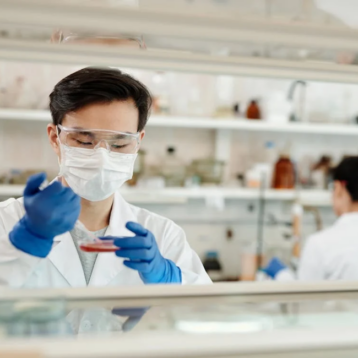|
By administering ultra-fast bursts of laser light on a metal surface, the team formed nano- and micro-sized pits, globules and strands across the surface. The laser used in the process is a so-called femtosecond laser that can generate laser pulses of just a few quadrillionths of a second. The precision of the laser can be deduced from its name – ‘femto’ in mathematics is 10 to the power of -15.
Such ultra-short pulses are too brief to transfer heat or shock to the material being cut, which means that cutting, drilling, and machining can occur with virtually no damage to the surrounding material. Furthermore, the laser is able to cut with extreme precision, making hairline cuts in thick materials along a computer-generated path.
“We’re able to change the surface structure of almost any piece of metal so that we can control how liquid responds to it,” says Chunlei Guo, associate professor of optics at the University of Rochester. “We can even control the direction in which the liquid flows, or whether liquid flows at all.”
The metal pulls the liquid at a speed of one centimeter per second against gravity. This phenomenon, which the scientists call a “wicking process”, is similar to when paper towels absorb liquid as molecular attraction and evaporation mix to move the liquid against gravity. The nanostructures that Guo fabricates alter the way molecules of liquid connect with the molecules of the metal, thus allowing the molecules to become essentially attracted to each other. By changing the structure of the metal, the speed at which the liquid is absorbed can be controlled.
|
“Imagine a huge waterway system shrunk down onto a tiny chip, like the electronic circuit printed on a microprocessor, so we can perform chemical or biological work with a tiny bit of liquid,” says Guo. “Blood could precisely travel along a certain path to a sensor for disease diagnostics. With such a tiny system, a nurse wouldn’t need to draw a whole tube of blood for a test. A scratch on the skin might contain more than enough cells for a micro-analysis.”
Guo and his team have also developed a metal that repels water by reducing the attraction between water molecules and metal molecules. This characteristic is termed ‘hydrophobic’ and according to the scientists, can be used to prevent germ growth in various environments.
TFOT has previously written about MIT’s electrospun fibers, made up of fibers that are a thousand times thinner than a human hair. We have also covered a super water repellent material, which could be used for a variety of purposes, including windshields, eyewear, clothing, building materials, road surfaces, ship hulls, and self-cleaning coatings. You can also check out our article about nanofilter arrays, which have an ultra thin porous membrane that may help revolutionize the way objects are manipulated on the molecular level.
Additional information on the novel absorbing metal can be obtained at the University of Rochester website.












